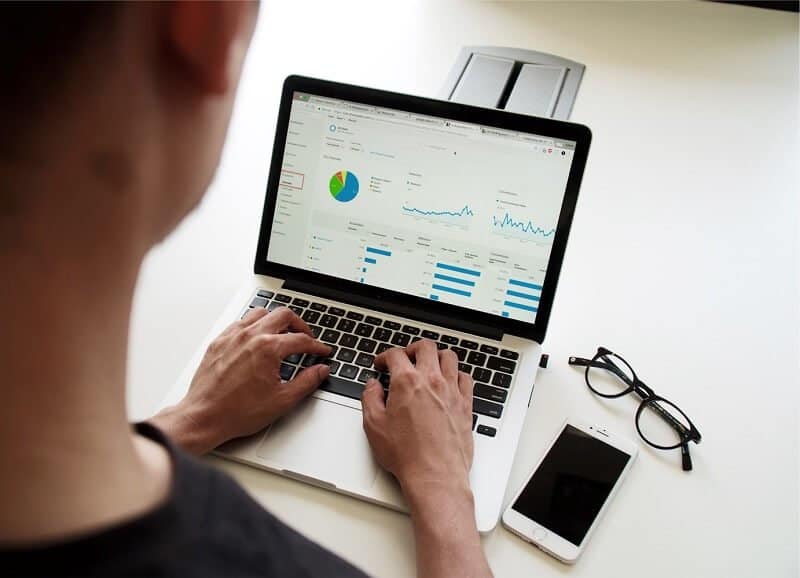
The balance sheet, used with income and cash flow statements, is an important tool for every investor and has to be read before investing.
By Guy Avtalyon
Every single investor must know how to read a balance sheet before investing in some company. It is one of the three most important reports that can tell you some valuable information about a company’s condition. The other two sources of such important information are the income statements and cash flow. If you know how to read a balance sheet, income statements, and cash flow reports, you’ll be able to make a proper investment decision.
While you read a balance sheet you’ll find out almost everything about the company’s financial status for a particular period. The balance sheet reveals what assets the company owns, what are its liabilities, how much in debts. Also, you’ll figure out how big is the owners’ capital, how many shareholders there are, etc.
The basic balance sheet calculation is:
Total Liabilities + Shareholder Equity = Total Assets
When you read a balance sheet of the company, you’ll notice that it consists of two parts as it is shown in the equitation above. This means the total assets of the company have to be equal to the sum of total liabilities and shareholder equity. In other words, the assets are balanced to the obligations at a particular point in time.
What info you can read in a balance sheet?
For example, information about the company’s financial condition at the end of the year. You have to evaluate a company and read a balance sheet before investing in a company. The balance sheet shows which are the company’s sources, debts, owners’ interests, etc. By examining the balance sheet and with the help of a few calculations, you can improve your odds of getting in a good investment.
For example, in the assets section, you’ll find the value of stocks the company owns, what are the company’s investments. Also does the company own real estate, how advanced is its equipment. You’ll find much other important info. But always keep in mind that you have to compare the amount of the cash and equivalents balance of the company. It is better if the company has a large amount of cash. That will provide a room to grow the business, and also, to pay dividends.
Read the balance sheet liabilities to estimate how much debt the company has. The lower is better, of course. Every investor should know if the company has some loans or deferred wages to its employees. This info might cause the investor to get into investment or stay away.
Also, you’ll figure out the amount of shareholders’ equity, the higher is better. But also, in this section, you can find how much money the company got from investors from the preferred and common stocks. The balance sheet shows the earnings the company has but has not been paid as dividends from the start-day to the particular period you are examining.
How to calculate the company’s debt-to-equity ratio?
To calculate the company’s debt-to-equity ratio you’ll have to divide the company’s total liabilities by its total shareholders’ equity.
Debt-to-equity ratio = total liabilities/total shareholders’ equity
If this ratio is below 1 that would mean the company has more equity than debts. So, you can easily conclude that investing in such a company carries less risk. Hence, if the debt-to-equity ratio is above 1 you can be sure the company has less equity than debts. That is in connection to financial problems that could push the company to a business crisis.
For instance, the company has $200.000 in total liabilities and $400.000 in shareholders’ equity. When we divide $200.000 by $400.000 to count a debt-to-equity ratio we will find it is 0.50. It isn’t the best but still quite acceptable debt level.
How to check if the company is able to meet short-term obligations
To calculate this current quick ratio you’ll need to divide its current assets by its current liabilities. Experts suggest, and we agree with them, the better is if this ratio is above 1.5.
For example, the company will be able to pay short-term debts if it has $50.000 in assets and $25.000 in liabilities.
$50.000/$25.000=2
This is a great ratio. But if the company with $50.000 in current assets has $35.000 in current liabilities, the outlook would be quite different.
$50.000/$25.000=1,42
This isn’t a good ratio because it shows the company doesn’t have enough short-term assets to pay its bills.
Also, if you read a balance sheet, you must read fine-prints. You didn’t pay attention? Well, you should. It can reveal some financial obligations that are not visible at first glance and that are not displayed in a balance sheet.
Read a balance sheet before investing
When you read a balance sheet, you’ll notice that the “current assets” are posted first. Because these are liquid assets, they are placed by order of liquidity. The criteria behind is which one can be turned into cash soon. For instance over the current year. The liquid assets are cash and its equivalents, inventory, accounts receivables, and
The next part of a balance sheet is “total assets.” These are holdings that can’t be quickly turned into cash in the current year. This includes land, equipment, marketable securities, prepaid expenses, intellectual capital, etc.
Likewise, current liabilities are shown first in the section of asset listing. For example, all debts in order of date dues, financial obligations expected within the current year. That could be outstanding interests, rent, salaries, and dividends. This list is followed by a list of total liabilities that incorporates pensions. Also, interest on bonds, the principal on bonds, etc.
The following is a total equity list also known as shareholder equity or net assets. This list incorporates saved or retained earnings, common and preferred stock, and extra paid-in funds.
What are the current assets?
Current assets have a duration of less than one year. In other words, they are accessible to turn into cash. Cash and cash equivalents such as checks and non-restricted bank accounts are the most important among current assets. Cash equivalents represent safe assets and can be easily turned into cash. Accounts receivables represent the short-term obligations that customers owe to the company. For example, when a company sells its product on credit, it will be in the list of current assets until the customers pay them off.
The inventory is also the current asset owned by the company. It can be everything that the company produces, raw materials, or other goods necessary in production.
What are non-current assets?
They present assets that couldn’t turn into cash within the one-year time frame. They could be tangible assets, for example, machines, computers, factories, land, etc. But, non-current assets can be intangible assets also. For example, licenses, patents, brand name, or copyright.
Why reading a balance sheet is important
The balance sheet is a valuable piece of information for investors but has some limitations. The first comes from its inability to give full insight into the company’s business history since it shows only a part of it. You’ll need to know more to have a full understanding of the company. For example, income and cash flow statements.
Anyway, read a balance sheet before investing in some company because it can give you a more clear picture of the company’s operations. If you read a balance sheet, you’ll understand what the company owes and owns. Its financial status will be clear to you. It is very important for investors to read a balance sheet, how to use it, how to analyze it. Reading a balance sheet will support your decision to invest or not in some companies.



Leave a Reply